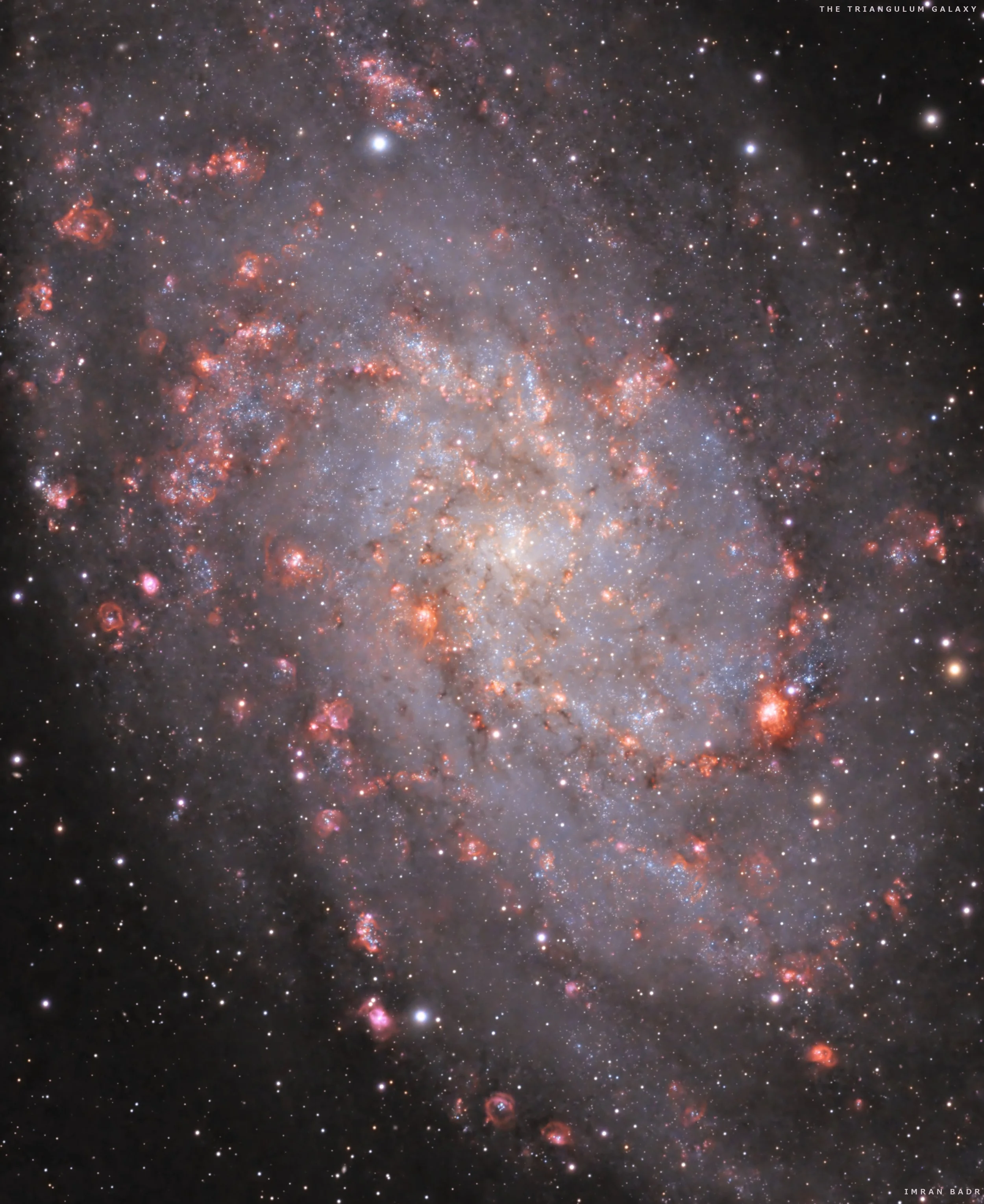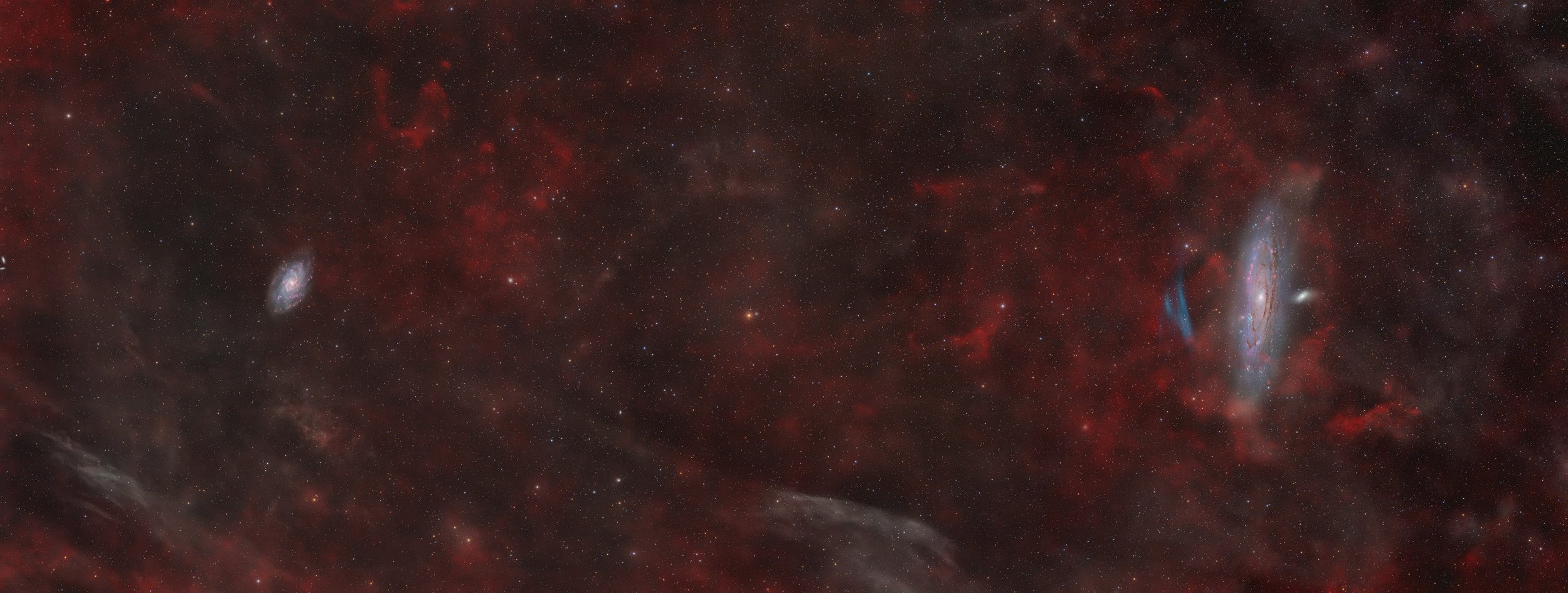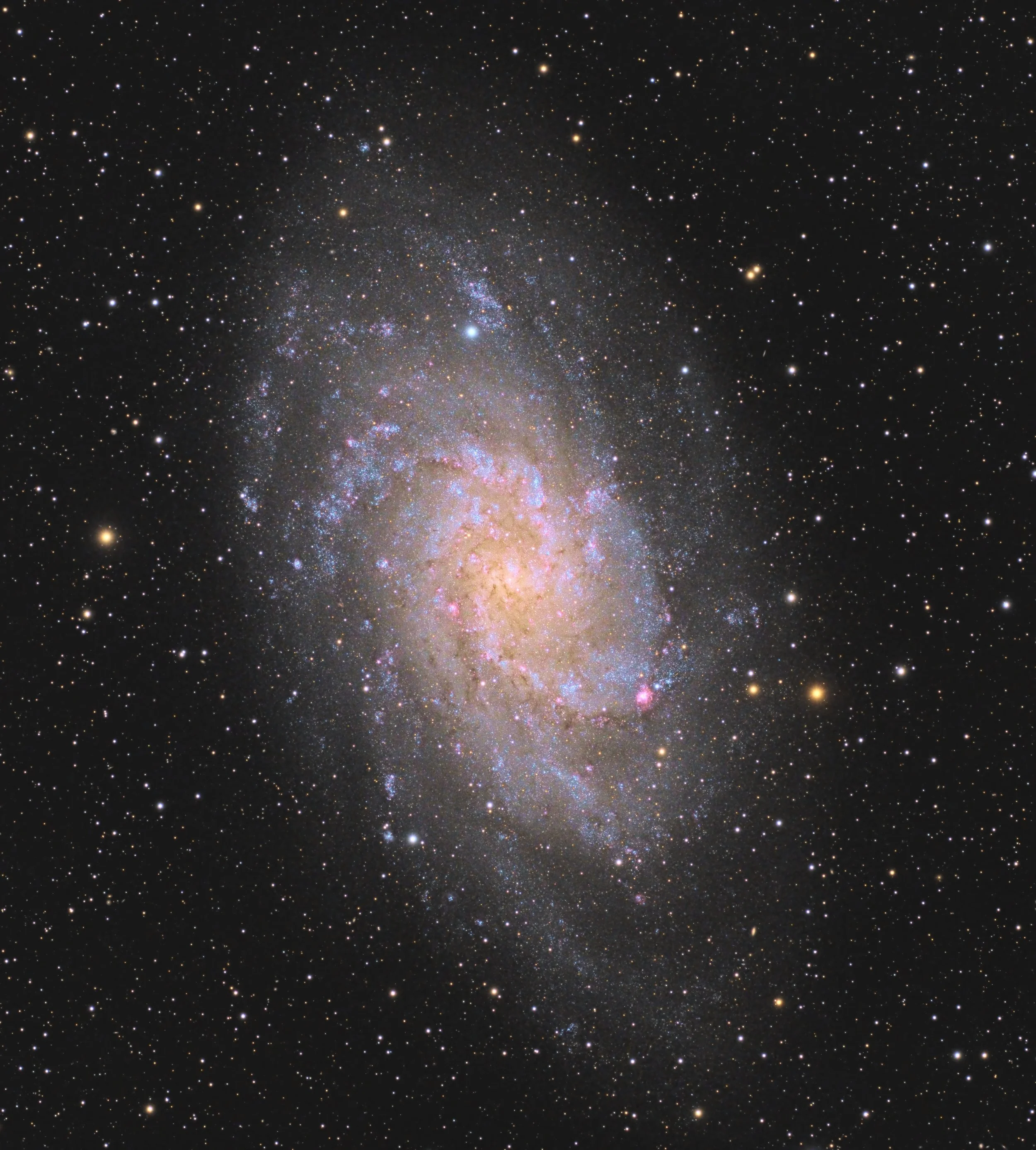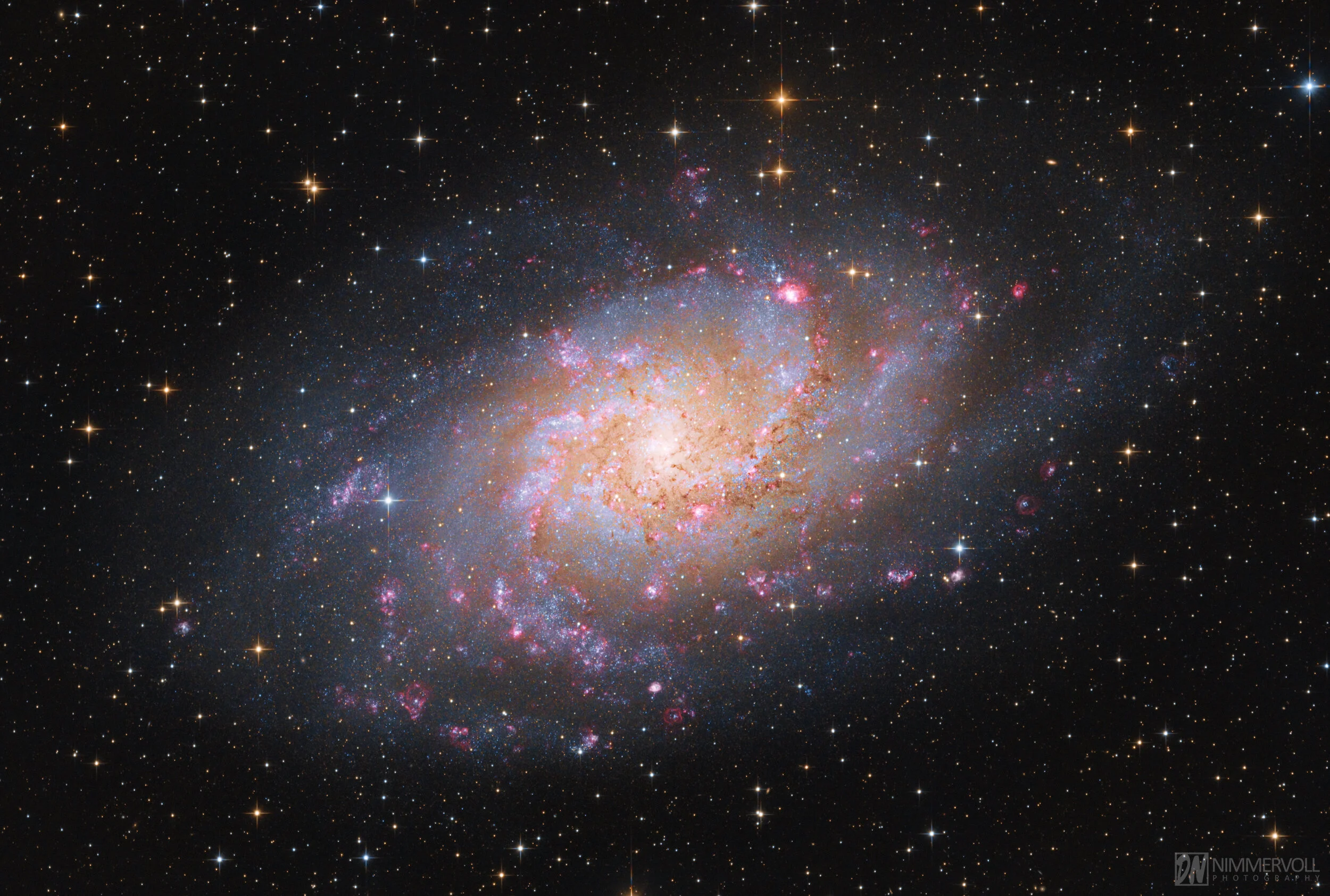
AAPOD2 Image Archives
m33
Featured Astrophotographer on AAPOD2
M 33 - Triangulum Galaxy (HaOIII-RGB)
The Triangulum Galaxy (M33) is located approximately 3 million light-years away in the constellation Triangulum. This galaxy is teeming with beautiful and intricate structures that captivate both amateur and professional astronomers alike. Its grand spiral arms are adorned with stunning star clouds and intricate dust lanes, which add to its visual splendor and scientific interest.
Particularly noteworthy are the galaxy's numerous nebulae, rich in hydrogen-alpha (Ha) and doubly ionized oxygen (OIII) emissions. These nebulae, often glowing in both Ha and OIII light, highlight regions of intense star formation. Observing these features in the Triangulum Galaxy not only provides a dazzling display of cosmic beauty but also offers valuable insights into the processes of star birth and galactic evolution.
The Triangulum Galaxy - M33
M33, also known as the Triangulum Galaxy, doesn't have a widely recognized alternative name like some other celestial objects. However, it is occasionally referred to simply by its Messier catalog number, M33. As the third-largest galaxy in our Local Group, after the Milky Way and Andromeda, M33 is a spiral galaxy located in the constellation Triangulum.
It is a popular target for amateur astronomers due to its relatively large size and proximity, making it visible in dark skies with binoculars or a small telescope. The Triangulum Galaxy is a fascinating object of study, providing insights into the dynamics and evolution of spiral galaxies.
From Triangulum to Andromeda
This captivating deep-space image spans a vast cosmic expanse from the Andromeda Galaxy (M31) to the smaller yet equally enchanting Triangulum Galaxy (M33). This astronomical composition is a mesmerizing blend of multi-spectrum imagery, seamlessly harmonizing hydrogen-alpha (Ha) and doubly ionized oxygen (OIII) emissions with luminance (L), red (R), green (G), and blue (B) channels. In this breathtaking capture, the fiery tendrils of Ha and the ethereal glow of OIII emissions intertwine with the intricate details of stars and dust, creating a celestial astro-photo that not only reveals the grandeur of these neighboring galaxies but also provides a glimpse into the intricate astrophysical processes shaping the universe.
m33
Image Description and Details : M33, familiarly known as the Triangulum Galaxy, is one of the closest large galaxies to Earth. It’s located in the constellation Triangulum at a distance of about 2.5 million light years and has a diameter of around 60,000 light years.
Luminance: Sky-Watcher Esprit 150 f/7 refractor and QHY600M camera with Optolong UV/IR filter
Chrominance: Takahashi FSQ-106 ED IV @ f/5 and QHY367C Pro one-shot colour camera with Optolong UV/IR filter
Processed in PixInsight
27x10m Lum = 4hr30m
51 x 5m OSC = 4hr25m
Total: 8hr45m
Image scale 0.72 arcsec per pixel (based on Luminance)
Copyright: Ron Brecher
M33
Image Description and Details :RECORDING DATA:
Location: Upper Austria
Object: Messier 33
Photo taken in: September 2021
Distance: 2.8 million light years
Diameter: 60,000 light years
Exposure: 203 x 300 sec. For RGB24 x 900 sec. For dual narrow band
Total: 23 hours
Calibration: Darks / Flats / DarkFlats
Mount: Skywatcher EQ6-R PRO
Telescope: Lacerta Fotonewton 250/1000
Corrector: Lacerta GPU coma corrector
Filter: Astronomik L2 UV-IR Block 2 ″ Optolong Filter L-eXtreme 2 ″
Camera: QHY268c @ Gain 0/60 at -15 ° C
Guiding: ZWO OAG with QHY5III462c and PHD2
Software: APP / Photoshop CC
Copyright: Daniel Nimmervoll
The Great Spiral in Triangulum- M33
Image Description and Details : The great spiral galaxy M33 in Triangulum, a favorite among imagers, imaged from my home observatory under suburban Bortle 5 skies, during the month of Oct, early Nov 2019. Stellarvue SVX152T @f8, 1200mm FL on a Paramount MyT. QSI 683 camera using Luminance, Red, Green, Blue, and 5nm Ha filters. 360min Luminance bin 1x1, 300min Red, 290min Green, 280min Blue and 660min Ha bin 2x2. Total of 31.5hrs of exposure time. PixInsight used for processing. Please visit the full size link on the web page above to see individual stars resolved within the galaxy.
Copyright: Jon Talbot









